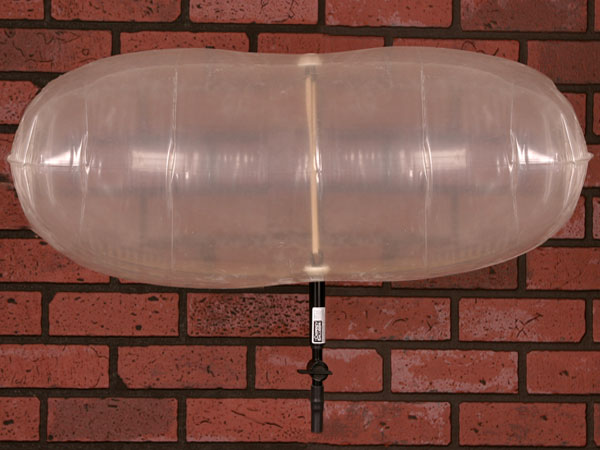
With all the windy weather recently, I’ve noticed how my house is a bit draughty – it actually sings to me as the air rushes in and out of the small gaps in the windows and doors! To stop this singing, I seriously looked into draught exclusion to try and keep as much of that precious warm air from escaping. I was quite surprised at how much energy I could save (and money!), therefore this blog details not only how I found ways to draught-proof a house, but also suggest some other cheap methods to help your house become more energy efficient.
While it’s good to have effective ventilation throughout the house to ensure good air flow through the house to help reduce any condensation or damp, (I’m not looking for a completely airtight building), but draughts are actually pretty costly from an energy point-of-view.
Here is how I tackled my doors
I have two entrances to my house, a front and a back door, both of which have fairly old doors on them. As the house is a little bit exposed to the elements (it sits on a slight hill so we get the full force of the wind and rain), I think the old wooden doors have warped a little bit and don’t sit flush with the frame. I noticed the previous owners had put in some foam strips to try and stop the air flowing through, however it didn’t appear that it helped that much. So, this is what I decided to do to improve the situation:
- Replaced the foam strip with a thicker foam strip to get a more snug fit around the edges of the door,
- Put a letterbox brush on the facing the inside,
- Put a little plate over the keyhole to stop the air getting through.
All these measures cost under £25 per door and a quick look online shows that I would save at least that amount over a year. With the payback of 12 months, it is a no-brainer!
Windows in good shape
The windows are actually in pretty good shape (the FENSA certificates when I bought the house said they were installed between 2006 and 2007) so no work is needed there. But you can do similar things with the self-adhesive foam strips on the windows or even more permanent metal strips (though these tend to be more expensive). You can even put silicon sealant on windows that don’t open to get a really snug fit.
Loft – quick and easy seal
I also noticed when I was up in the loft (looking at the water system – will have a separate blog on this at some stage), I noticed that there is a bit of air rushing in and out of the hatch, so I sealed that with some foam strips on all four sides, much like you can do with a normal door (cost less than a fiver). Quick and easy and probably making a marginal benefit that will help in the long-run.
Shutting out that chimney noise
When the air Source heat pump engineer came round a couple of weeks ago to look at the possibility of installing a pump, he commented on the fact that I have two disused chimneys in the house. This is a problem as they also appear to be letting a lot of the heat out. One option is to install a cap on the chimney, but I’m quite keen to get the fireplaces up and running over time, so I’ve invested in a genius device called a “chimsoc”, which is a plastic, inflatable, reusable balloon.
Basically, you place it halfway up the chimney, inflate it and it sits there keeping most of the warm air from escaping! It’s got a slight gap at one side to allow for a little bit of airflow and a handy dangling device which can be seen in the fireplace and will stop me inadvertently lighting a fire while it still up there! They are also good for reducing any noise, especially if like me you live in a busy area – near a main road or railway line.
A bit of expanding foam on external pipework
My house has quite a few pipes running in and out it. In pipes for gas and water from the well, and out for waste water (sinks, showers, toilets etc). I invested in a can of expanding foam (£8 from B&Q) and filled the gaps around these pipes. It’s amazing stuff (be careful and use gloves though as it’s quite sticky!) and has reduced the draughts considerably. You can spray it in and then saw off / sand down any excess.
All in all then, I have spent under £90 on a number of measure I have installed above (you might need to spend a little more if your windows need a bit of draught proofing), but improved my house extensively. I can already notice the difference in the reduced draughts and hopefully soon I’ll start noticing the savings in my heating bills.
Hope to this was useful.













Good article Ed – all simple, low-cost but very effective ideas
Thank you for this article Ed.
The Chimsoc is an excellent idea! I can honestly say I have never heard of it before. I have always had issues with the draught coming from the chimney and we have tried numerous things such as putting a picture in front of the fire when it’s not in use but then we have nowhere to put the picture when we do want to use the fire and it isn’t that effective anyway. I have now found a supplier not far from me and have just placed my order! 🙂
Thanks again.